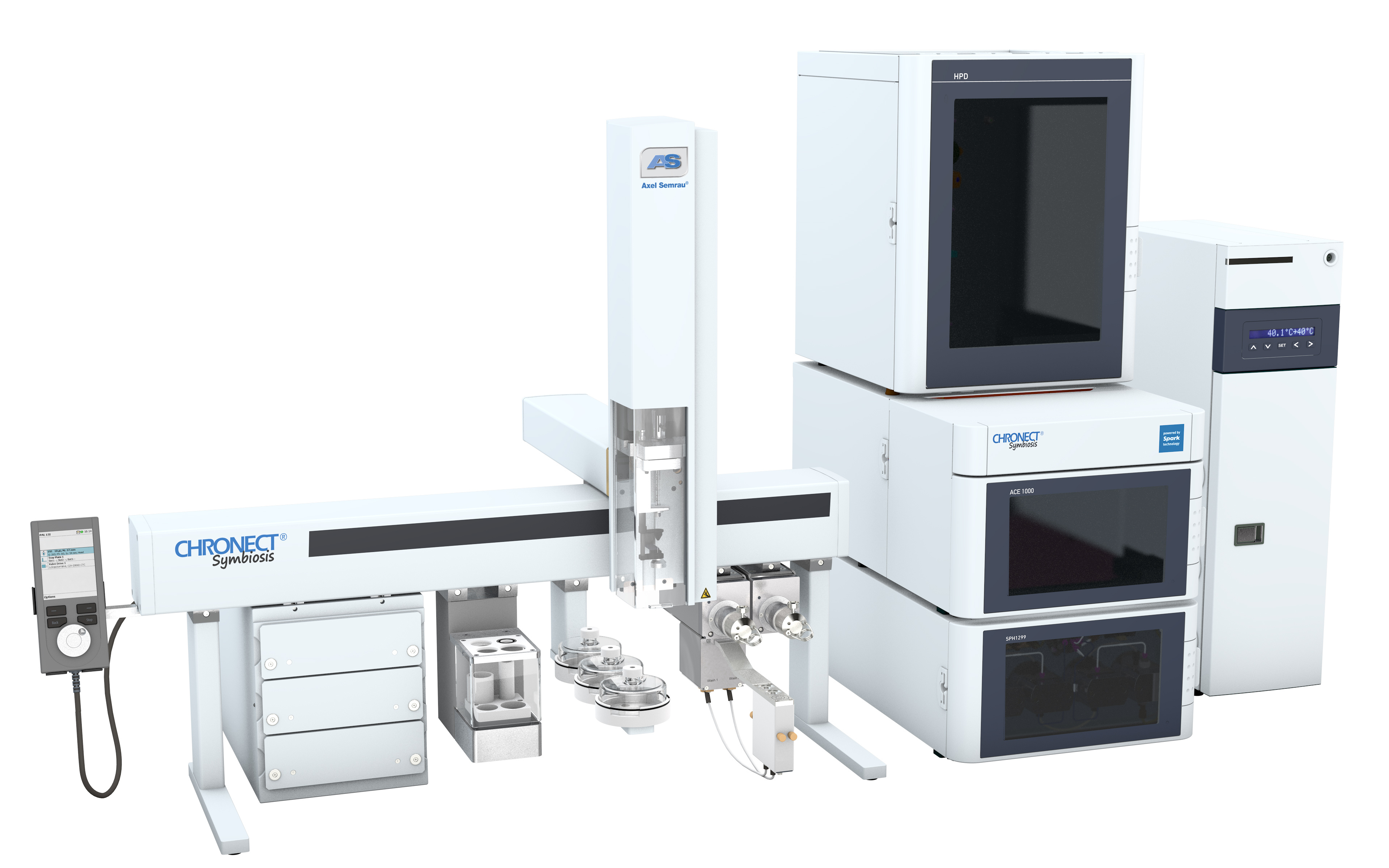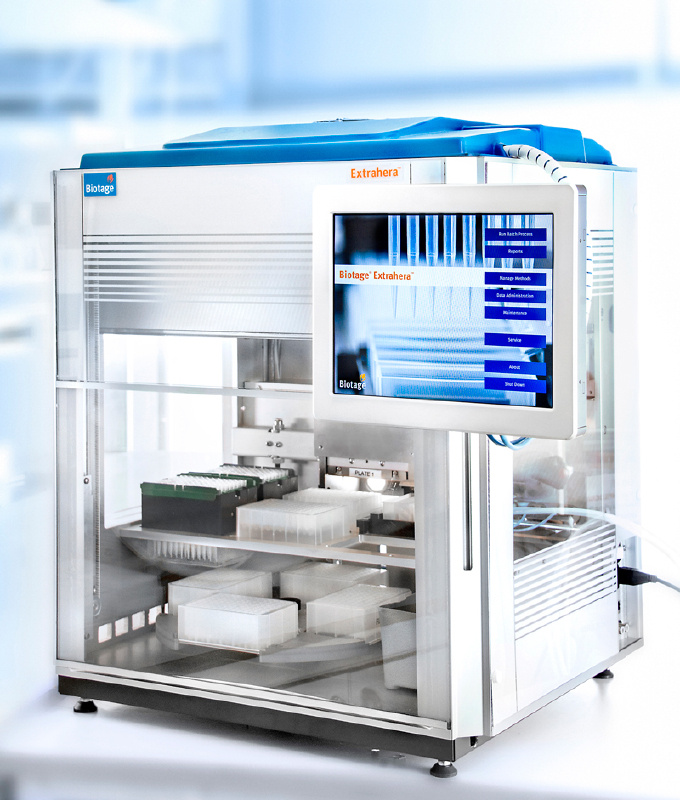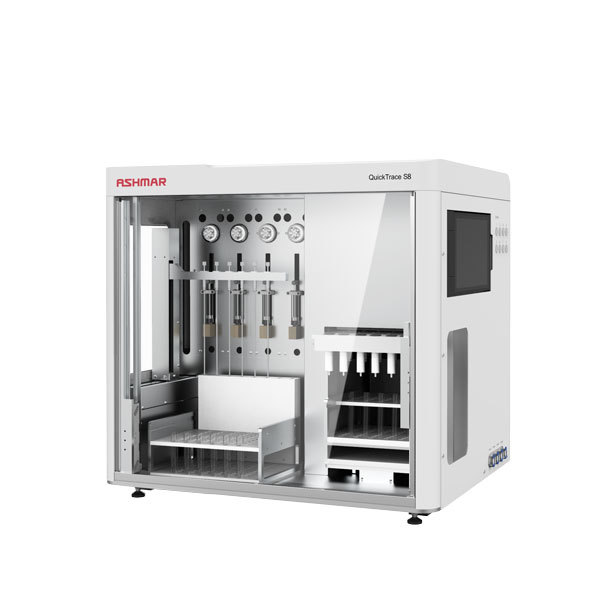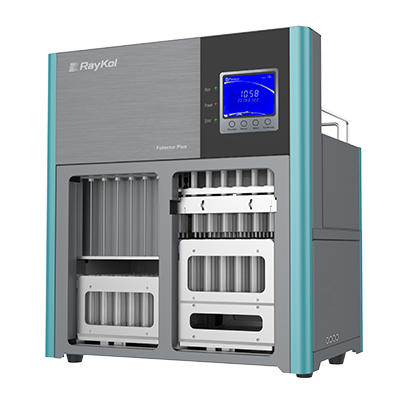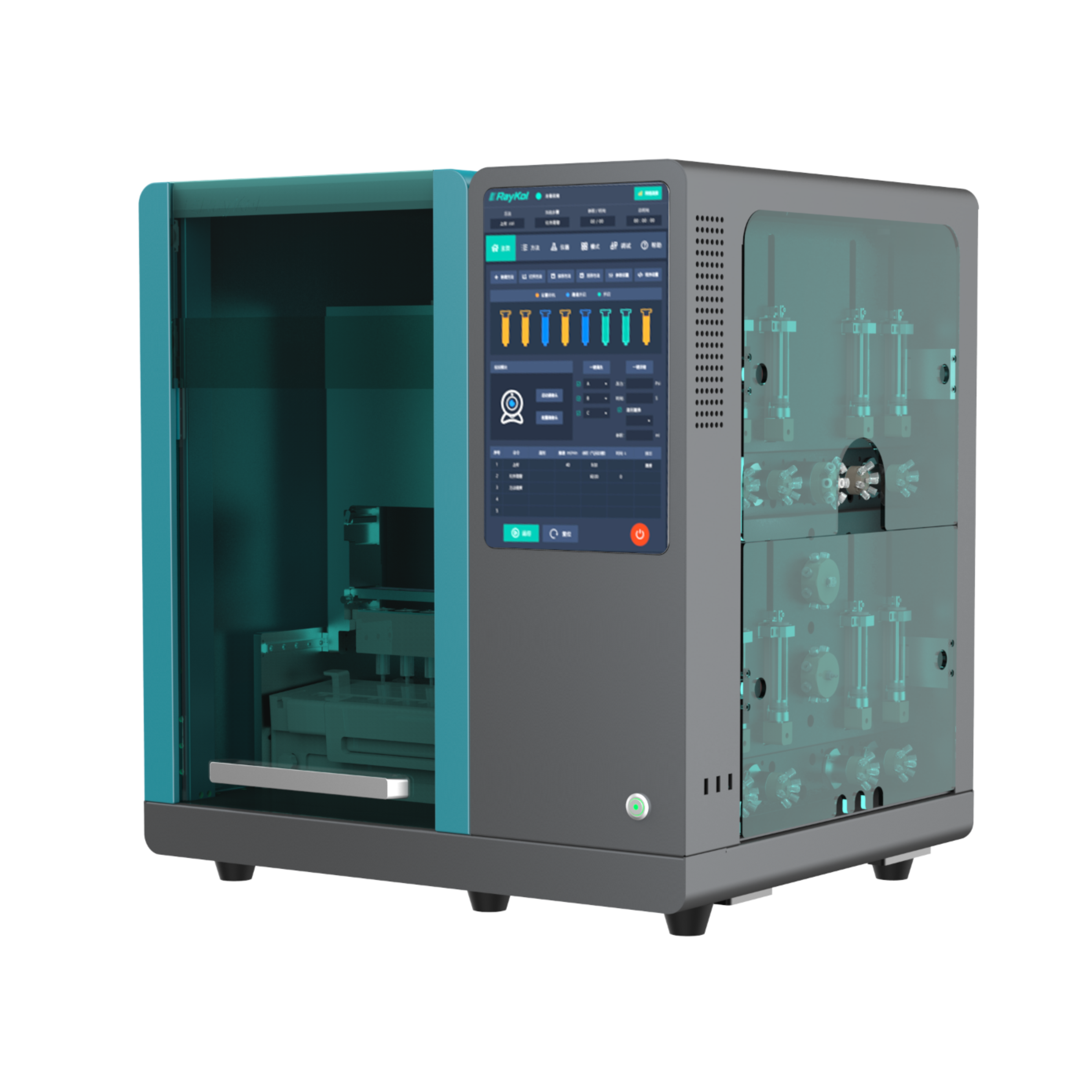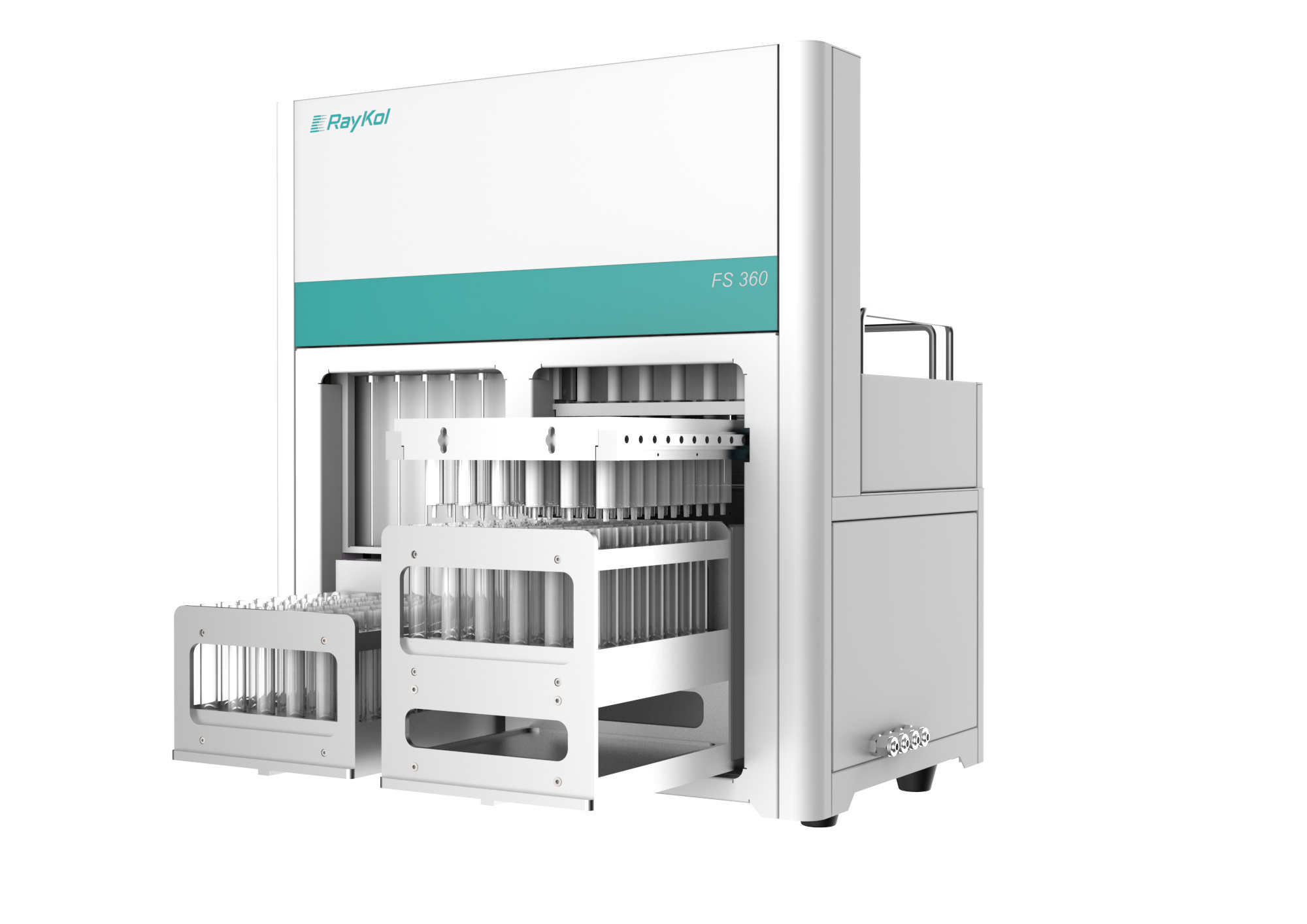方案详情
文
草甘膦( Glyphosate) 是由美国孟山都公司开发的一种高效、低毒、广谱灭生性除草剂,广泛用于橡胶、桑、茶、果园及甘蔗地等。近年来,草甘膦的产量和销售额一直占据世界除草剂品种的首位,但随着草甘膦产量和使用量的日益增加,草甘膦会在环境和生物体内不断富集,然后通过食品和饮用水进入人体,从而对人体造成危害。随着草甘膦的使用量不断增加,特别是在茶园中的运用日益剧增,其残留问题也越来越受到关注。国家标准GB2763-2016《食品安全国家标准食品中农药最大残留限量》中规定:茶叶中草甘膦的最大残留量为≤1mg/kg。故对草甘膦的准确检测显得尤为重要。本方法采用了在线固相萃取-液相色谱/串联质谱(SPE-LC/MS-MS)联用系统对茶叶中的草甘膦及其代谢物进行全自动分析。采用全自动在线前处理平台与在线SPE结合的方法,自动提取及衍生化,处理400微升茶叶样品,采用专用于草甘膦分析的萃取柱对目标物进行萃取,采用C18反相分析柱在24分钟内实现色谱分离。这种新开发的方法具有较高的灵敏度和准确性,只需进行最少的样品预处理,并且运用了全自动在线SPE技术,分析通量较高,适用于检测。
方案详情

(1) Pre-treatment protocol was supplied by Monsanto Company, St Louis, USA. Simultaneous Determination of Glyphosate and Glufosinate inSurface Water by Online-SPE LC-MS/MS Analysis Alex Berhitu, Martin Sibum INTRODUCTION A fast, robust and relative easy to use analytical method for the simultaneous determination of the herbicides Glyphosateand Glufosinate ammonium, in water by LC-MS/MS has been developed, using currently common instruments andtechniques. The 9-fluorenylmethyl chloroformate (FMOC-CI) was used for derivatization of both herbicides and thedegradation product AMPA. The derivatives were quantified by using a SymbiosisTM Pico, online SPE-LiquidChromatography system and a Sciex API 2000 tandem mass spectrometric detector. The developed method has a linearrange from 0.05-10 pg/L with a detection limit of 0.025 pg/L(25 ppt) for all three compounds. Glyphosate [N-(phosphonomethyl)glycine] is claimed to be the world's biggest selling herbicide by its manufacturer Monsanto. It is also said tobe highly effective at killing weeds, safe to users and members of thepublic and harmless to the environment. In pure chemical termsglyphosate is an organophosphate in that it contains carbon andphosphor. However, it does not affect the nervous system in the sameway as organophosphate insecticides, and is not a cholin-esteraseinhibitor. Glufosinate [DL-homoalanin-4-yl-(methyl)phosphinic acid] is a short namefor the ammonium salt,glufosinate-ammonium produced by Bayer.It is abroad-spectrum contact herbicide and is used to control a wide range ofweeds after the crop emerges. Glufosinate is a natural compoundisolated from two species of Streptomyces fungi. The application ofglufosinate leads to reduced glutamine and increased ammonia levels inthe plant tissues. This causes photosynthesis to stop and the plant dieswithin a few days. Figure 1: Chemical structures SAMPLE PRE-TREATMENT(1) Water samples are filtered at the collection site using a PallGHP Acrodisc 13 mm with nominal 0.45 pm pore diameterto remove suspended particulate matter. A solution of100 mg/mL Sodium Thiosulfate is added immediately aftercollection to destroy residual chlorine which reacts withglyphosate. In the laboratory, 10.0 mL of sample(s) aredispensed into 19 mL, screw-capped plastic tubes. Thesample in the tube is buffered to pH 8.5 by adding boratebuffer, and after mixing, a solution of FMOC is added to alltubes. Primary and secondary amines react readily withFMOC-CI to form derivatives.Derivatization is carried out inan oven at 40 ℃ for 60 minutes. After allowing it to cool toambient temperature, the reaction is stopped and stabilizedby adding 2% phosphoric acid. All tubes are diluted to15.0 mL with DI water. An aliquot of 2.0 mLis stored frozenin cappedautosampler vial until analyzed. XLC-MS PROTOCOL The developed method processes various surface water samples using the SymbiosisTM Pico System and API-2000 MS. INJECTION RouTINE 1.5 mL derivatized samples are injected using the autosampler.Wash routine is performed with 3 mL Acetonitrile/Water [50:50] containing 0.2% Formic Acid. SPE CONDITIONS Cartridge: 10x2 mm HySphere C18-HD (Spark Pn: 0822.609)Activation: 1 mL ACN,5 mL/min Equilibration: 4 mL H20,5 mL/min Sample Loading: 2 mL 0.2% H3PO4.2 mL/min Washing: 4 mL 5% ACN, 2 mL/min Clamp flush: 0.5 mL 5% ACN, 5 mL/minElution: 7 min with LC gradient LC CONDITIONS Column: Water Atlantis dC18 3.5 pm 2.1x50 mm (Waters Pn:186001291)Mobile phase A: 5 mM Ammonium Acetate (1%MeOH)Mobile phase B: Acetonitril/Methanol [50:50] Flowrate: 0.25 mL/min MS SETTINGS A Sciex API 2000 MS with Turbo Ion Spray is used in the negative mode using the following settings: Figure 3: Schematic presentation of the method RESULTS LINEARITY, ACCURACY AND PRECISION A calibration curve was determined by combining the results of 3 repeated injections of the full set of calibration standards.Glufosinate was used as internal standard for Glyphosate and AMPA. Figure 6: Calibration curve for AMPA,Glyfosinate and Glyphosate. Exp. Conc.(pg/L) AMPA CV Accuracy Glyfosinate CV Accuracy Glyphosate CV Accuracy (%) (%) (%) (%) (%) (%) 0.05 2.76 94.22 0.29 101.0 6.41 94.08 0.10 1.73 104.2 4.92 99.77 0.16 101.3 0.15 6.99 99.15 7.53 98.11 8.84 92.86 0.20 7.82 92.58 0.69 108.1 3.81 97.60 7.65 102.5 5.08 87.78 5.62 109.9 2.06 108.5 1.13 99.30 6.48 107.6 2.86 101.4 3.91 109.3 4.91 98.01 10 8.60 97.49 0.86 96.59 5.95 98.67 SURFACE WATER SAMPLES To demonstrate the usefulness of this assay for different watermatrixes, samples were taken from various sites. 1) Bendienplein: Local pond in the garden of Spark Holland building.2) Oranje kanaal: Local channel that runs through a denseagriculture area.3) Schoonebeker diep: Local river with high iron content and also runs through dense agri-cultural area. Figure 7: various sampling sites near Emmen. Table3: Results These results show that the Channel contains thehighest amount of Glyphosate/AMPA, followed bysome elevated levels in the River. Both watersmeander through agricultural land and the differencecan be explained by the higher natural refresh rate ofthe river. It also shows that there is no contaminationby Glufosinate in this area. CONCLUSIONS From this study it is concluded that the presented method is able to produce reliable results within 3hrs for various surface. waters with a detection limit of 0.025 pg/LL.The linear range of this method for Glufosinate, Glyphosate and its degradation product AMPA was 0.05-10pg/L (r>0.998)with an accuracy between 87-110% and a deviation of less than 9% CV.The study was initiated to meet current needs with relatively common instruments. It is expected that the detection- andquantitation limits can be further reduced by using a more sensitive MS or increasing the injection volume of the presented method. REFERENCE: 草甘膦( Glyphosate) 是由美国孟山都公司开发的一种高效、低毒、广谱灭生性除草剂,广泛用于橡胶、桑、茶、果园及甘蔗地等。近年来,草甘膦的产量和销售额一直占据世界除草剂品种的首位,但随着草甘膦产量和使用量的日益增加,草甘膦会在环境和生物体内不断富集,然后通过食品和饮用水进入人体,从而对人体造成危害。随着草甘膦的使用量不断增加,特别是在茶园中的运用日益剧增,其残留问题也越来越受到关注。国家标准GB2763-2016《食品安全国家标准食品中农药最大残留限量》中规定:茶叶中草甘膦的最大残留量为≤1mg/kg。故对草甘膦的准确检测显得尤为重要。本方法采用了在线固相萃取-液相色谱/串联质谱(SPE-LC/MS-MS)联用系统对茶叶中的草甘膦及其代谢物进行全自动分析。采用全自动在线前处理平台与在线SPE结合的方法,自动提取及衍生化,处理400微升茶叶样品,采用专用于草甘膦分析的萃取柱对目标物进行萃取,采用C18反相分析柱在24分钟内实现色谱分离。这种新开发的方法具有较高的灵敏度和准确性,只需进行最少的样品预处理,并且运用了全自动在线SPE技术,分析通量较高,适用于检测。
确定
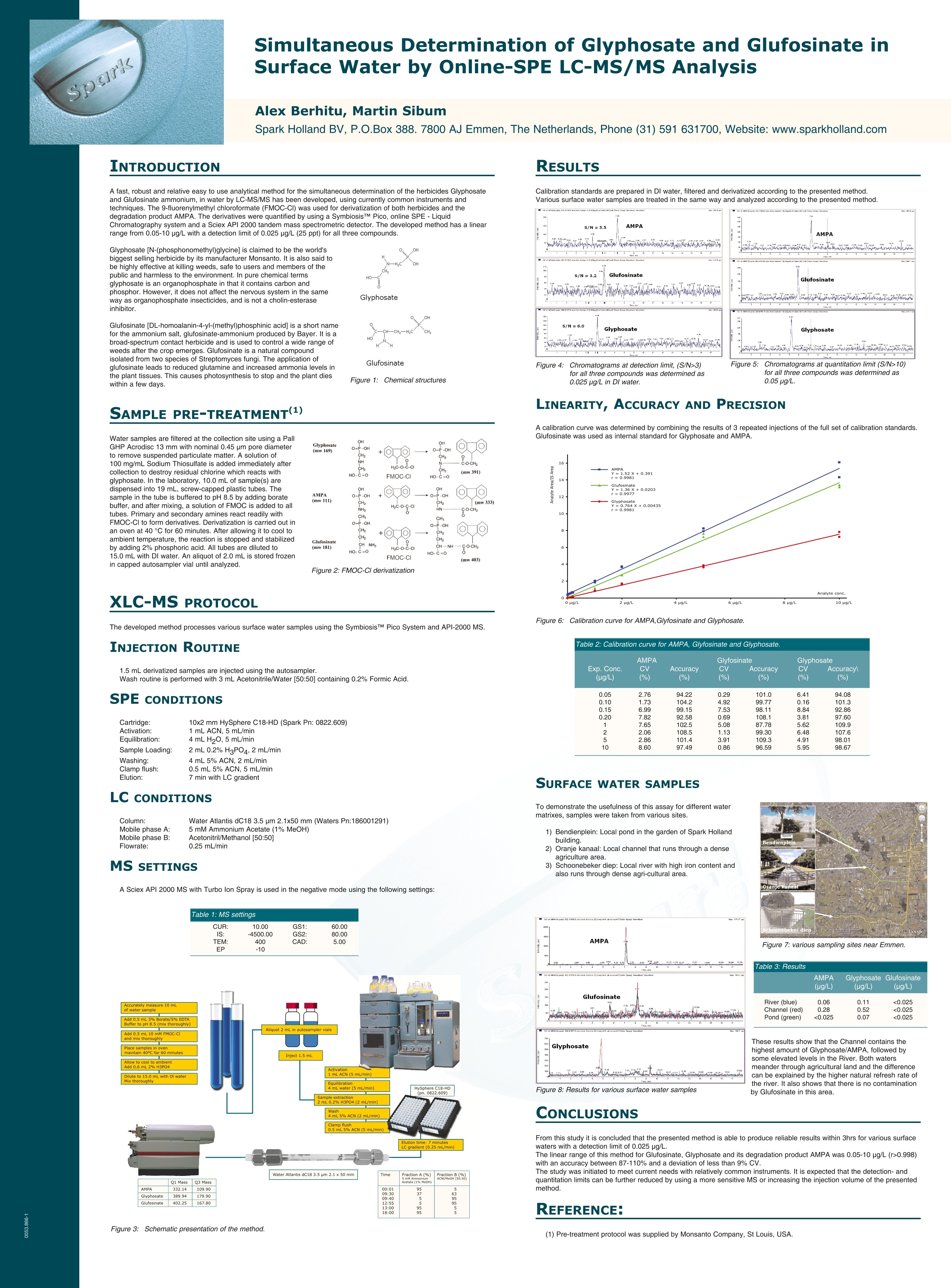
还剩1页未读,是否继续阅读?
仪真分析仪器有限公司为您提供《茶叶中草甘膦,草铵膦,AMPA检测方案(固相萃取仪)》,该方案主要用于茶叶中农药残留检测,参考标准--,《茶叶中草甘膦,草铵膦,AMPA检测方案(固相萃取仪)》用到的仪器有超高压液相在线SPE色谱联用系统CHRONECT Symbiosis
推荐专场
相关方案
更多
该厂商其他方案
更多

